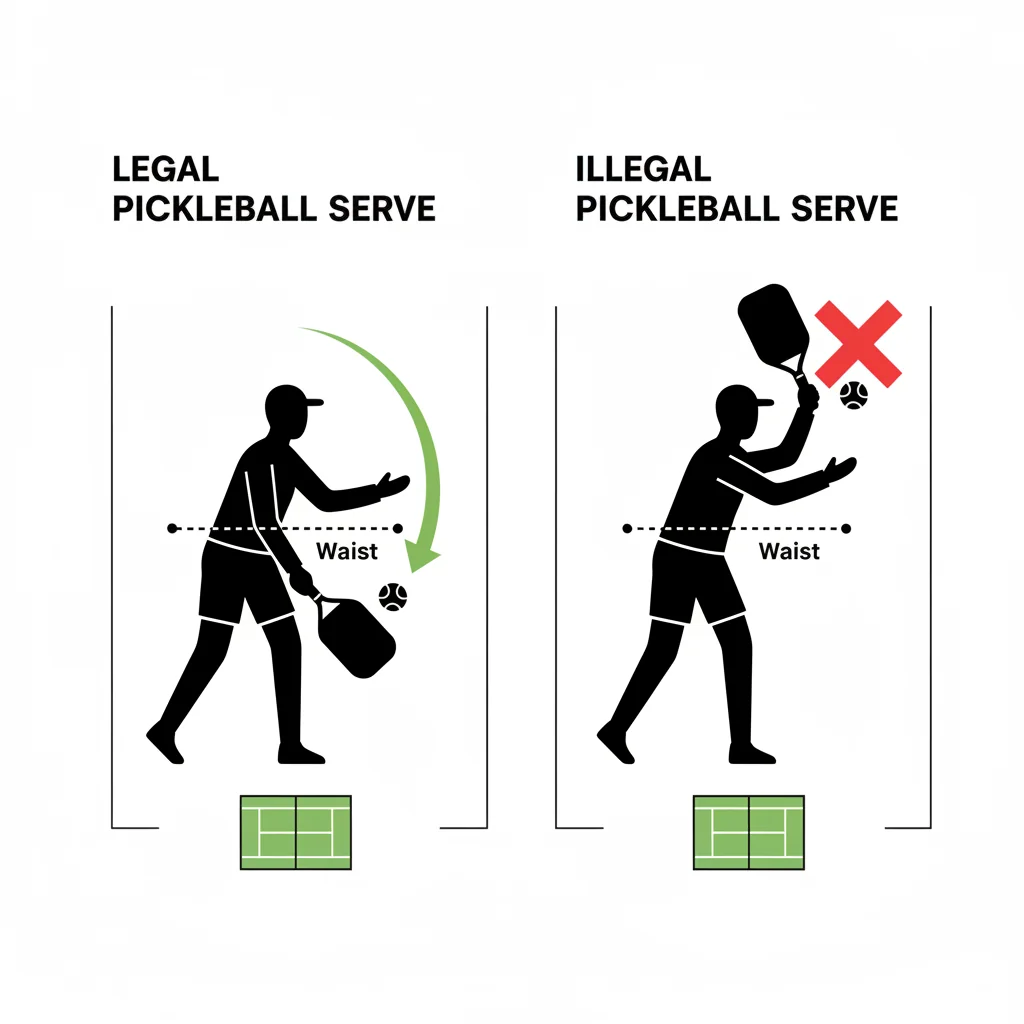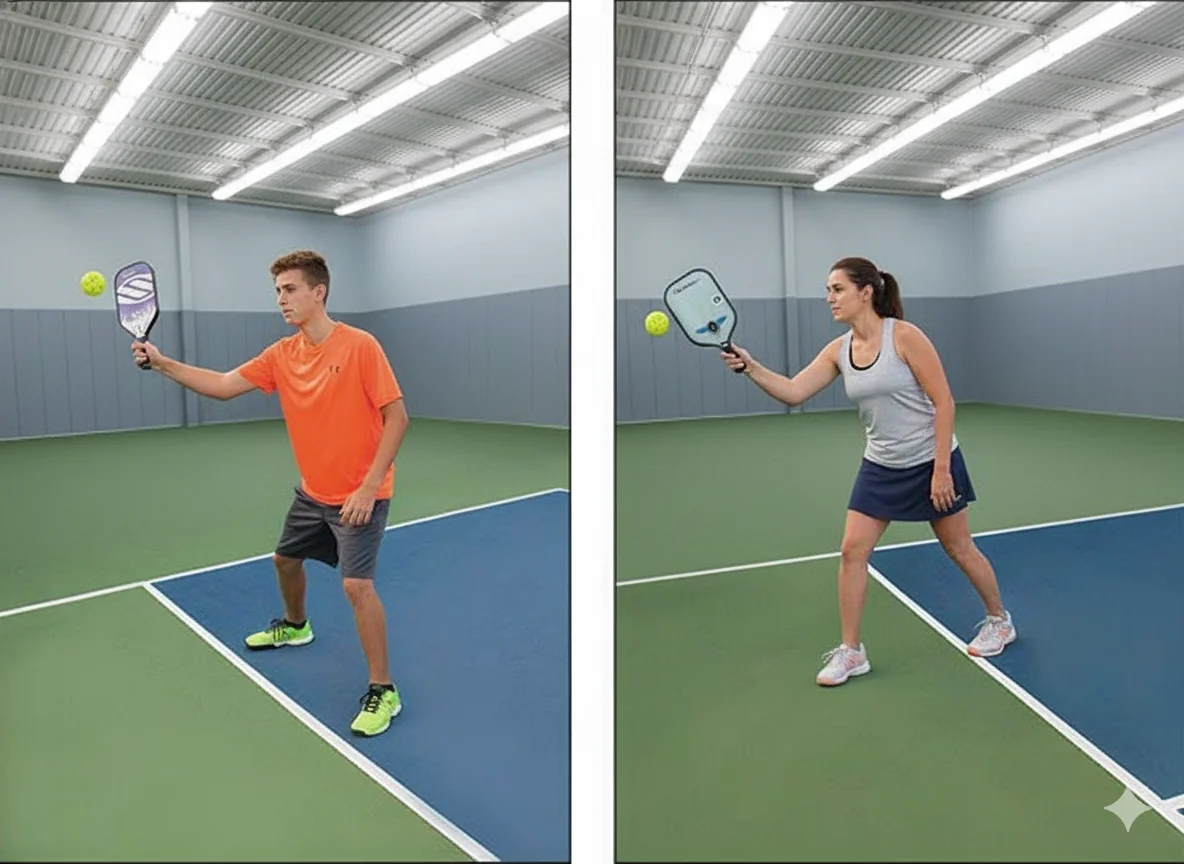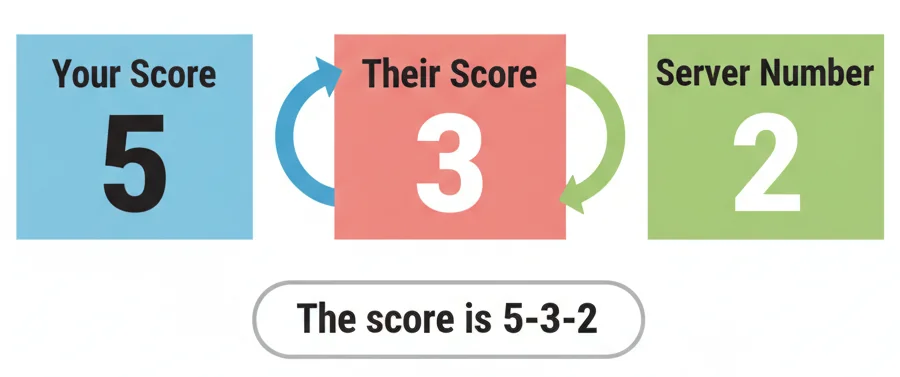Beginner's Guide to Pickleball Rules - Start Playing Today

Welcome to pickleball! You're about to learn one of the fastest-growing sports in America. The good news? The basic rules are simple, and you can start playing your first game in just 10 minutes.
This beginner's guide will walk you through the essential rules step-by-step, in the exact order you need to know them. No confusing jargon, no overwhelming details—just the core rules that will get you on the court today.
What Do I Need to Know to Play My First Game?
To play your first game of pickleball, you need to understand just 5 core concepts:
- The Court: Where you play and what the lines mean
- The Serve: How to start each point
- The Double-Bounce Rule: The most important rule in pickleball
- The Kitchen (Non-Volley Zone): Where you can't hit volleys
- Scoring: How to keep score and win the game
Master these five things, and you're ready to play!
In This Guide
Step 1: Understanding the Court
A pickleball court looks similar to a badminton court. Here's what you need to know:
Court Size
- The court is 20 feet wide by 44 feet long (for both singles and doubles)
- It's divided in half by a net that's 36 inches high at the sides and 34 inches in the middle
The Kitchen (Non-Volley Zone)
- The most important area is the 7-foot zone on each side of the net
- This is called the Non-Volley Zone or "the kitchen"
- It's marked by a line parallel to the net
- You cannot hit a volley (ball in the air) while standing in this zone
Service Courts
- Each side is divided into two service courts (right and left)
- These are where you must serve the ball to start each point

The pickleball court layout with the three most important areas labeled.
Step 2: How to Serve
Every point starts with a serve. Here are the basic serving rules:
Where to Serve From
- Stand behind the baseline (the back line of the court)
- Serve diagonally to the opposite service court
- Your feet must not touch the baseline or court when you hit the ball
How to Serve (The Motion)
You must hit the ball underhand
Your paddle must contact the ball below your waist
Your arm must move in an upward arc
Where the Serve Must Land
- The ball must land in the diagonal service court
- It must clear the kitchen (Non-Volley Zone) line
- It cannot touch any lines except the sideline and baseline (those are "in")
What Happens if You Miss?
- In doubles, your partner gets a chance to serve (except on the first serve of the game)
- In singles, you lose the point and your opponent serves

A legal serve (left) shows contact below the waist with an upward swing. An illegal serve (right) often involves contact that is too high or a downward, tennis-style swing.
Beginner Tip: The Drop Serve
If you're struggling with the underhand serve, try the drop serve. Simply drop the ball and let it bounce, then hit it. This is legal and often easier for beginners! The ball must be dropped (not thrown) from your hand.
Step 3: The Double-Bounce Rule (Most Important!)
This is the rule that makes pickleball unique and fun. It's called the double-bounce rule or two-bounce rule.
Here's How It Works:
After the serve, the ball must bounce once on each side before anyone can hit a volley (hitting the ball in the air).
- The Serve: Server hits the ball
- The Return: The receiving team must let it bounce, then hits it back
- The Third Shot: The serving team must also let it bounce, then hits it back
- After That: Now anyone can hit volleys or let the ball bounce—your choice!
Why This Rule Exists: It prevents the serving team from rushing the net and smashing the ball immediately. It makes the game more strategic and gives both teams a fair chance to get into position.

This diagram shows the required bounces for the first two shots after the serve. The ball must bounce on the return (Bounce 1) and on the third shot (Bounce 2).
Common Beginner Mistake
The most common fault for new players is hitting the return of serve out of the air (volleying it). Remember: you MUST let the serve bounce before you hit it back. Then the serving team MUST let your return bounce before they hit it. After those two bounces, you can volley!
Step 4: The Kitchen Rule (Non-Volley Zone)
The kitchen rule is simple but crucial:
The Basic Rule: You cannot hit a volley (a ball in the air) while standing inside the kitchen (the 7-foot zone near the net).
What This Means:
- You CAN step into the kitchen to hit a ball that has bounced
- You CAN stand in the kitchen between shots
- You CANNOT hit a ball out of the air while any part of your body is touching the kitchen
- You CANNOT step into the kitchen after hitting a volley (even if momentum carries you in)
The Kitchen Line:
- The kitchen line itself is part of the kitchen
- If your toe touches the line while you volley, it's a fault

A player must establish foot position outside the Non-Volley Zone before making contact with the ball for a legal volley.
Step 5: How to Score
Pickleball uses a unique scoring system. Here are the basics:
Key Scoring Rules:
- Games are typically played to 11 points (must win by 2)
You can only score when your team is serving
If you win a rally while receiving, you don't get a point—you just get the serve
Calling the Score (Doubles): Before each serve, call out three numbers: 1. Your team's score 2. The other team's score 3. The server number (1 or 2)
Example: "4-2-1" means your team has 4 points, they have 2 points, and you're the first server.
Calling the Score (Singles): In singles, only call two numbers: 1. Your score 2. Their score
Example: "5-3" means you have 5 points and they have 3.

Each number in the score call has a specific and important meaning.
Don't Worry About Scoring at First
Scoring is the hardest part for beginners to remember. In your first few games, ask someone to help you keep score. Focus on learning the serve, the double-bounce rule, and the kitchen rule first. Scoring will become natural with practice!
Quick Reference: Rules Summary
Here's a quick summary of everything you've learned:
Before the Point:
- Serve underhand, below the waist, from behind the baseline
- Serve diagonally to the opposite service court
During the Point:
- Let the serve bounce (return of serve)
- Let the return bounce (third shot)
- After that, you can volley or let it bounce
- Don't volley while standing in the kitchen
- The ball is out if it lands outside the lines (except the line itself is "in")
Scoring:
- Only the serving team can score points
- Games go to 11, win by 2
- Call the score before each serve
What to Do Next
Congratulations! You now know enough to play your first game of pickleball. Here's what to do next:
- Print Our Cheat Sheet: Download our free printable rules cheat sheet to take to the court
- Watch a Game: Seeing the rules in action helps everything click
- Find a Court: Use the USA Pickleball court finder to locate courts near you
- Just Play: The best way to learn is to get on the court and play!
Want to Learn More?
- Complete Pickleball Rules Guide - The full, detailed rulebook
- Serving Rules - Deep dive into serving
- Kitchen Rules - Everything about the Non-Volley Zone
- Scoring Rules - Master the scoring system
Beginner FAQs
What equipment do I need to start playing pickleball?
You need just three things: a pickleball paddle, a pickleball (a plastic ball with holes), and a court. Many community centers and parks have courts and may even provide equipment for beginners. Court shoes with good lateral support are recommended but not required for casual play.
Can I play pickleball if I've never played tennis or racquet sports?
Absolutely! Pickleball is one of the easiest racquet sports to learn. Many players come from non-racquet sport backgrounds. The smaller court and slower ball make it very beginner-friendly. Most people can rally within their first 30 minutes of playing.
How long does it take to learn pickleball?
You can learn the basic rules and start playing in about 10-15 minutes. Within a few hours of play, most beginners can keep a rally going and understand the flow of the game. Becoming a skilled player takes practice, but the learning curve is much gentler than tennis or badminton.
What's the hardest rule for beginners to remember?
Most beginners struggle with the double-bounce rule at first. They forget to let the return of serve bounce before hitting the third shot. The kitchen rule is also tricky—players often step into the kitchen while volleying without realizing it. Both become second nature after a few games.